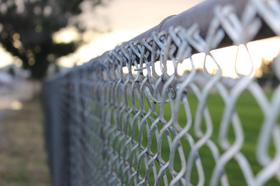Top Rankings
Humboldt Comm School District ranks among the top 20% of public school district in Iowa for:
Category
Attribute
Math Proficiency
Highest math proficiency (Top 20%)
Graduation Rate
Highest graduation rate (Top 5%)
For the 2025-26 school year, there are 2 public elementary schools serving 846 students in Humboldt Comm School District. This district's average elementary testing ranking is 9/10, which is in the top 20% of public elementary schools in Iowa.
Public Elementary Schools in Humboldt Comm School District have an average math proficiency score of 85% (versus the Iowa public elementary school average of 70%), and reading proficiency score of 79% (versus the 69% statewide average).
Minority enrollment is 14% of the student body (majority Hispanic), which is less than the Iowa public elementary school average of 29% (majority Hispanic).
Overview
This School District
This State (IA)
# Schools
4 Schools
924 Schools
# Students
1,452 Students
320,020 Students
# Teachers
102 Teachers
23,100 Teachers
Student-Teacher Ratio
14:1
14:1
Student By Grade
District Rank
Humboldt Comm School District, which is ranked within the top 30% of all 325 school districts in Iowa (based off of combined math and reading proficiency testing data) for the 2022-2023 school year.
The school district's graduation rate of 92% has increased from 90-94% over five school years.
Overall District Rank
#77 out of 327 school districts
(Top 30%)
(Top 30%)
Math Test Scores (% Proficient)
80%
68%
Reading/Language Arts Test Scores (% Proficient)
75%
70%
Science Test Scores (% Proficient)
67%
63%
Graduation Rate
92%
90%
Students by Ethnicity:
Diversity Score
0.27
0.47
% American Indian
n/a
n/a
% Asian
1%
3%
% Hispanic
11%
13%
% Black
1%
7%
% White
85%
71%
% Hawaiian
n/a
1%
% Two or more races
2%
5%
All Ethnic Groups
District Revenue and Spending
The revenue/student of $14,908 in this school district is less than the state median of $16,468. The school district revenue/student has stayed relatively flat over four school years.
The school district's spending/student of $13,371 is less than the state median of $16,042. The school district spending/student has stayed relatively flat over four school years.
Total Revenue
$22 MM
$8,262 MM
Spending
$19 MM
$8,048 MM
Revenue / Student
$14,908
$16,468
Spending / Student
$13,371
$16,042
Best Humboldt Comm School District Public Elementary Schools (2025-26)
School
(Math and Reading Proficiency)
(Math and Reading Proficiency)
Location
Quick Facts
Rank: #11.
Taft Elementary School
(Math: 91% | Reading: 85-89%)
Rank:
Rank:
10/
Top 5%10
612 2nd Ave North
Humboldt, IA 50548
(515) 332-3216
Humboldt, IA 50548
(515) 332-3216
Gr: 1-4 | 415 students Student-teacher ratio: 12:1 Minority enrollment: 16%
Rank: #22.
Humboldt Middle School
(Math: 82% | Reading: 75%)
Rank:
Rank:
8/
Top 30%10
1400 Wildcat Rd
Humboldt, IA 50548
(515) 332-2812
Humboldt, IA 50548
(515) 332-2812
Gr: 5-8 | 431 students Student-teacher ratio: 14:1 Minority enrollment: 12%
Recent Articles

School Choice vs. Neighborhood Schools: Key Factors
Explore school choice vs. neighborhood schools in 2025. Learn key factors parents should weigh when deciding the best fit for their child.

Best School Match 2025: Public vs Charter vs Magnet
Compare 2025 public, charter, and magnet school options with updated data, trends, and strategies to find the best fit.

Public School Boundaries and Equity in 2025
Explore how public school boundaries shape access, equity, and opportunity for students in 2025. Learn the impact on families and education policy.





